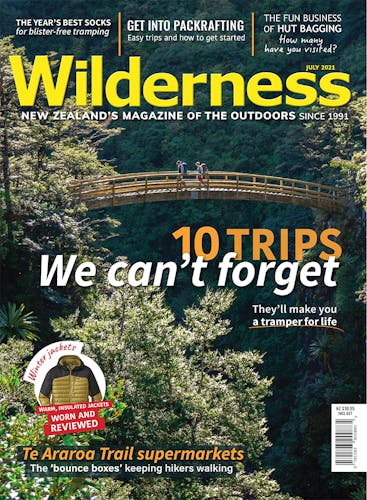With a few extra items in your pack, you’ll be ready to tackle winter trips
Winter is a great time to tramp. There are fewer people, leaving the huts and tracks quiet. There are also fewer sandflies. Snow brings another dimension to the mountains and landscapes can look more beautiful in the low-angled light. Longer evenings also allow extra reading or hangout time.
But winter tramping is more challenging: there’s less daylight and, what do you know, it’s colder. As the temperature drops, warmer clothes, sleeping bag and tent go in, and pack weight goes up. And travel can be slower if the ground is frozen or there are poor snow conditions. To boost my comfort vs cold ratio on winter trips, here are a few equipment extras I often pack.
Closed-cell foam
Lightweight inflatable mats are popular, but can have limitations in the cold due to the lower R-value. Check the R-value of your mat – if it’s not four-season and stuffed with insulation, consider adding a bedroll of 6mm closed cell foam to your load. It’s super light, adds considerable warmth and gives you something to sit on at lunchtime.
Extra gloves
We actually lose a lot of heat through our hands as well as our heads, so keep them warm. Cold hands lose their dexterity rapidly – most of us have experienced fumbly fingers that can make operating a lighter or zip slider difficult, a reminder that hands are essential to our survival. I usually carry three pairs of gloves: a lightweight merino or fleece glove (or liner) for cool but dry conditions, a mid-weight insulated softshell-style glove, and a ski-style waterproof and breathable insulated glove for stormy weather.
Neoprene socks
This unconventional extra can make all the difference to your feet especially on trips with frequent river crossings. Neoprene socks (sometimes called booties) used by divers, kayakers and surfers are considerably more effective insulators than ordinary socks in wet conditions. If temperatures are around or below zero, or you’re walking with wet boots, then neoprene will ward off the cold injury that can come from prolonged wet feet.
Extra fuel and batteries
Longer nights and colder mornings often mean more brews, and sometimes snow needs to be melted. Canister (propane/butane-type) stoves are less efficient in cold weather, so factor extra fuel into your packing list. I always make sure I pack spare batteries for my headlamp. With shorter days, you could be walking in the dark if a tramp takes longer than expected. And even if you are settled in by night, it’s a long one and headlamps get plenty of use.
Clothing with hoods
Base or mid-layers with hoods add comfort when tramping in cold weather. I take a hooded mid-layer fleece during summer and winter now as I find it helps to regulate my body temperature while on the move. It’s like having an extra hat, but the extra neck insulation makes a big difference too, keeping cold wind off exposed skin. A down jacket with a hood is an essential item in a winter pack, especially for camping, or hanging out watching that amazing winter light falling across the ranges.








